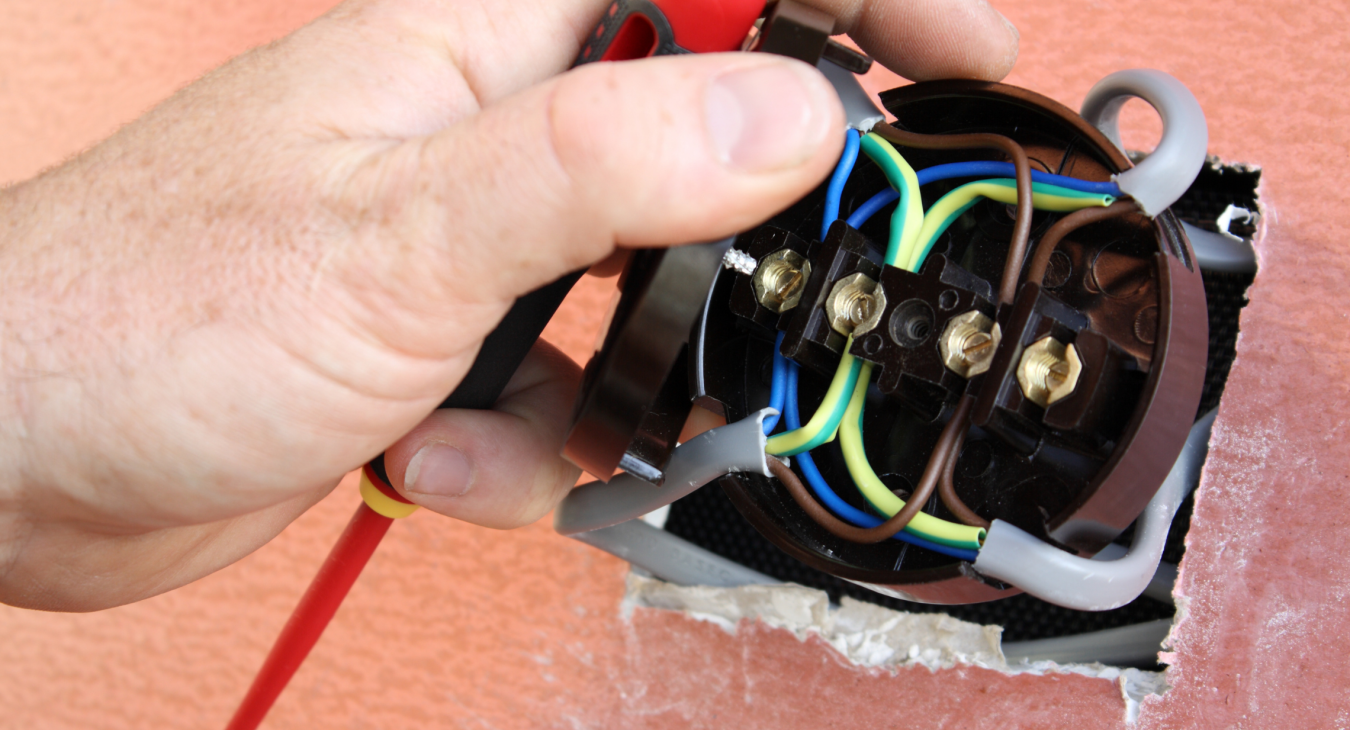
When you move into a property, it can be easy to presume that it is electrically safe. However, it is not a legal requirement for sellers to provide an electrical safety certificate, so it is strongly recommended to hire a reputable electrician to inspect and test all electrical installations before moving in.
If you are renting, landlords are required to ensure that the electrics are tested every five years by a registered and qualified ‘competent person’.
The older the property, the less likely it is to be compliant with modern building regulations. The electrics may have been neglected for many years and the wiring may need to be updated.
Here are just a few electrical issues that may arise in an old property:
Outdated or faulty wiring
Old and faulty wiring is a common problem in older properties, as it struggles to meet the demands of modern technology. Electrical surges, blown fuses and flickering lights are signs that the wiring needs updating.
If a property has not been rewired within the last 25-30 years, chances are it will need upgrading in order to bring it up to current standards. This may include upgrading the fuse board or consumer unit.
Many older properties are still fitted with aluminium wiring from the 1960s and 70s, as a cheaper alternative to copper. However, properties of aluminium can cause deterioration of connections, creating a fire hazard. Wire connections should be copper with a dielectric wire nut connection to ensure optimal conductivity.
Wear and tear
Old properties may have broken or loose light switches, faulty sockets and split cables. During an inspection, these are often the first issues noted by an electrician.
Outlets can become worn over time and no longer grip the prongs of a plug. The loose contact can cause electrical arcing which is a serious fire hazard.
Not enough sockets
Older properties often have fewer sockets which can lead to overloading and possible electrical fires. Sockets may also be placed in inconvenient or unsafe locations. During an electrical inspection, it may be recommended that more sockets are installed.
Outdated appliances
Old rental properties may have faulty or uneconomical appliances such as washing machines and fridges. They may be unsafe to run and could cause power surges or a fire if not replaced. By using more energy, they will also cost more to run. Modern appliances should have an energy efficiency rating of A or higher.
PAT (Portable Appliance Testing) will ensure the safety of smaller, portable appliances such as microwaves and kettles.
High energy consuming lighting
Older properties may have outdated light fittings with bulbs that are not energy efficient and long-lasting, such as LEDs. There may not be enough lights installed or they are inconveniently located, for example near windows instead of nearer the centre of the room.
Lack of fire alarms or poor placement
Fire alarms should be installed on every floor of a habitable property but this may not be the case in older properties. It is the landlord’s responsibility to ensure that they are installed correctly and maintained.
What does an electrical inspection involve?
During an inspection, an electrician will check every electrical function in the property, including the above issues and provide a report with recommendations. They will also look for overloaded circuits and potential electric shock risks and identify if there are any earthing or bonding issues. It may be that remedial work needs to take place before the property is safe to move into.
Trained and knowledgeable electricians can spot potential dangers and hazards which may be hidden or not easy to spot.
We are qualified to carry out electrical inspections on a range of properties. We are also experienced in carrying out PAT, fitting fire alarms, rewiring, and installing sockets and lighting. Take a look at our full list of services and get in touch for a free quote.

